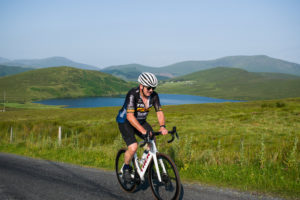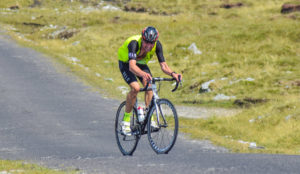Training for road ultra-cycling events, especially those covering distances of 200, 300, and 500 kilometers, requires a well-structured and progressive training plan. Here’s a comprehensive guide to help you prepare for these challenging events:
The Wild MAYO Ultra has 3 event distances (200, 300 & 500k) and a range of categories. Solo, Solo Unsupported, Pairs, Relay team 2-4 riders and for those who like to ride together there is the group option.
To Take on Wild Mayo Ultra, enter here https://eventmaster.ie/event/9qdnIw5HWJ
- Base Training:
Long Rides: Start with moderate distances and gradually increase the length of your long rides each week.
Build Endurance: Focus on building a solid aerobic foundation. Ride at a comfortable pace for extended periods to enhance your cardiovascular fitness.
- Progressive Distance and Intensity:
Incremental Increases: Gradually increase the distance of your long rides. Every 2-3 weeks, add 10-20% to your longest ride.
Intensity: Incorporate interval training to improve your speed and overall fitness. Include high-intensity intervals followed by periods of rest.
- Specificity Training:
Event Simulation: As the event approaches, simulate the conditions of the actual race by doing long rides on similar terrain.
Night Riding: If the event involves riding at night, practice night rides to familiarize yourself with the challenges and adapt your lighting system and equipment.
- Nutrition and Hydration:
Trial and Error: Experiment with nutrition during long training rides to find what works best for you. This includes hydration, electrolytes, and energy sources.
Plan for Stops: If the event doesn’t provide support, plan where and when you’ll stop for refueling.
- Strength Training:
Core Strength: A strong core is crucial for maintaining a comfortable and efficient riding position during long distances.
Leg Strength: Incorporate strength training for your lower body, focusing on muscles used in cycling. Squats, lunges, and leg presses can be beneficial.
- Recovery:
Rest Days: Include rest days in your training schedule to allow your body to recover.
Massage and Stretching: Regular massages and stretching can help prevent injuries and keep your muscles flexible.
- Tapering:
Reduce Volume: In the final week or two leading up to the event, reduce training volume while maintaining some intensity to stay sharp.
Stay Rested: Ensure you are well-rested and mentally prepared for the event.
- Equipment Preparation:
Bike Fit: Ensure your bike is properly fitted to minimize discomfort and prevent injuries during long rides.
Gear Testing: Use training rides to test your race-day gear, including clothing, nutrition, and hydration systems.
- Mental Preparation:
Visualization: Mentally rehearse different parts of the race, including challenging sections.
Positive Affirmations: Develop positive affirmations to stay motivated during tough moments.
- Event Strategy:
Pacing: Develop a pacing strategy based on your training and experience. Start conservatively, especially in longer events.
Mindful Riding: Stay focused on your own pace and avoid getting caught up in the speed of others.
Remember, individual variations exist, and it’s crucial to tailor the plan to your fitness level, experience, and specific event requirements. Consulting with a coach or experienced cyclists can provide valuable insights and personalized guidance.











